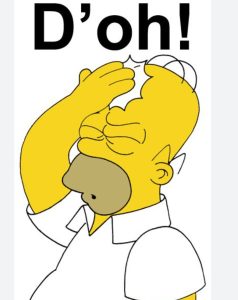Sound Marks – Tips and Tricks
Sound marks are a special form of trademark that can be a valuable asset for any company seeking to distinguish its brand from the competition. But what is a valid sound mark? What isn’t? Sound marks must meet the requirements of any other trademark. Specifically, the sound must be used to identify the source of a good or service, and further must be sufficiently distinctive. But how do the courts and the Trademark Office interpret these requirements? See below for some helpful tips and tricks.
Valid Sound Marks
The below marks illustrate that sound marks can take many different forms, whether a musical composition, a spoken catchphrase, or even a synchronized audio and visual composition.
20th Century Fox (Registration No. 2000732) – This commonly known sound mark is composed of nine bars of a musical composition that identifies 20th Century Fox as the producer of a film.

Homer Simpson’s “D’OH” (Registration No. 3411881) – This mark consists of Homer’s popular catchphrase, “D’oh!” The registration covers “entertainment services in the nature of an animated television series.”

HBO Entertainment Sound and Image (Registration No. 4950505) – Interestingly, this mark is a sound mark synchronized with a specific image—the “HBO ENTERTAINMENT” logo that emerges out of television static as the static fades out. The sound mark itself is the sound of an older TV turning on and then a deep chord.

Invalid Sound Marks
Not all sounds are registerable as sound mark. The two most common reasons that an application for a sound mark may be refused registration are because of the sound’s functionality and because of a lack of distinctiveness.
Functionality – In the case of In re Vertex Group LLC, the applicant attempted to trademark the alarm sound of its alarm watch. Unsurprisingly, this mark was rejected by the Trademark Office and upheld on appeal because the alarm sound was a crucial part of how the alarm functions.
Distinctiveness – In Nextel Comm., Inc. v. Motorola, Inc., the Trademark Office published Motorola’s chirp sound mark for opposition to which Nextel formally opposed. In deciding Nextel’s opposition to the mark, the Trademark Trial and Appeal Board (TTAB) rejected Motorola’s application since it lacked distinctiveness. This conclusion was further backed in consumer surveys presented by Nextel that showed a lack of distinctiveness in Motorola’s chirp sound.
Harley Davidson failed to overcome both hurdles of Functionality and Distinctiveness when attempting to trademark the exhaust sound of its V-Twin motorcycle engine. When the mark was published for opposition, numerous competitors challenged the trademark, including Kawasaki and Honda. The opposition provided strong evidence to show that many competitors also produced a V-Twin engine that, by its nature, sounded very similar to Harley’s exhaust sound. After facing opposition and litigation regarding the application, Harley Davidson ultimately abandoned its efforts to register the exhaust sound.
Please reach out today if you would like to discuss your own sound mark trademark application!